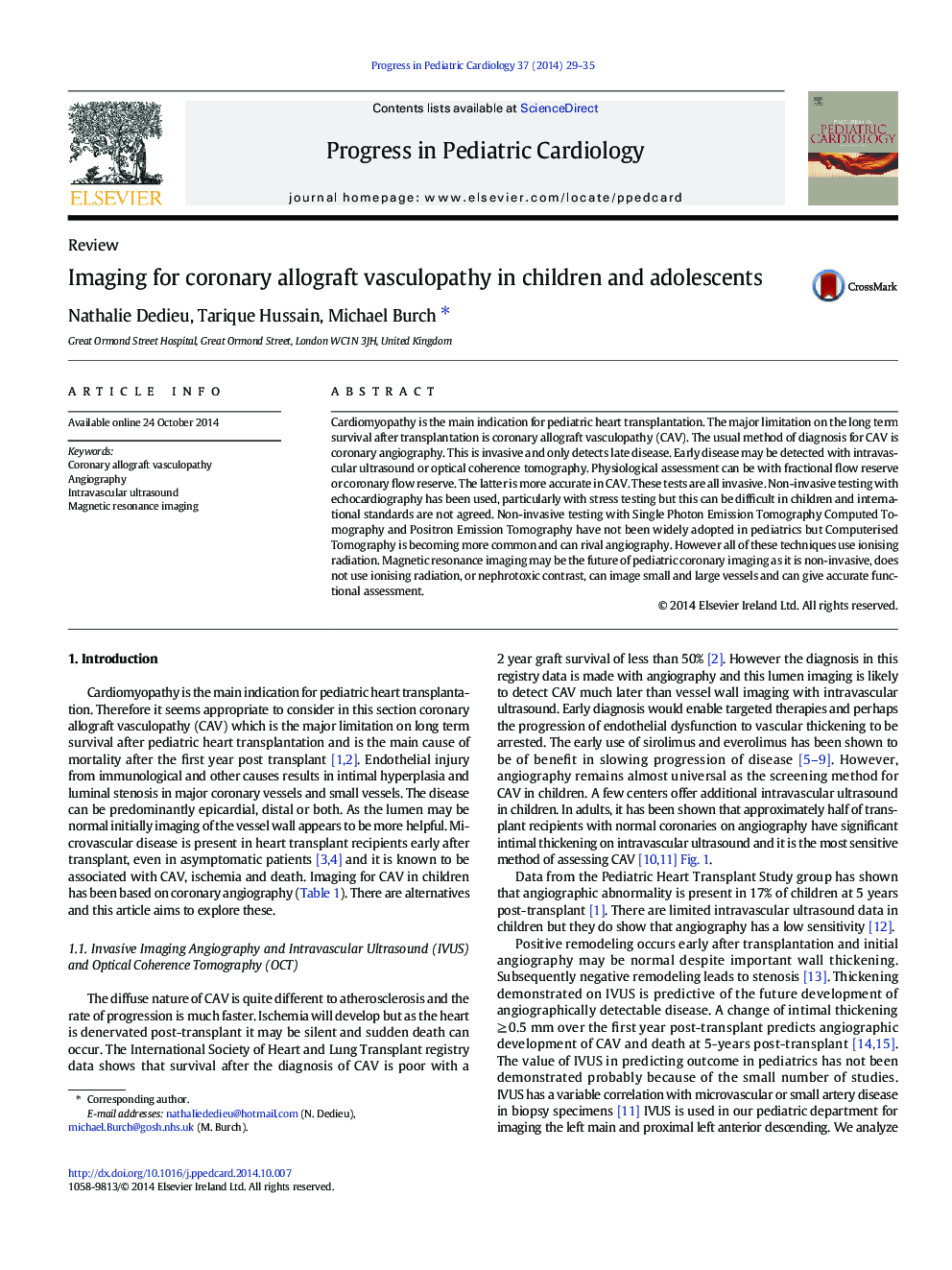| Article ID | Journal | Published Year | Pages | File Type |
|---|---|---|---|---|
| 3007444 | Progress in Pediatric Cardiology | 2014 | 7 Pages |
Abstract
Cardiomyopathy is the main indication for pediatric heart transplantation. The major limitation on the long term survival after transplantation is coronary allograft vasculopathy (CAV). The usual method of diagnosis for CAV is coronary angiography. This is invasive and only detects late disease. Early disease may be detected with intravascular ultrasound or optical coherence tomography. Physiological assessment can be with fractional flow reserve or coronary flow reserve. The latter is more accurate in CAV. These tests are all invasive. Non-invasive testing with echocardiography has been used, particularly with stress testing but this can be difficult in children and international standards are not agreed. Non-invasive testing with Single Photon Emission Tomography Computed Tomography and Positron Emission Tomography have not been widely adopted in pediatrics but Computerised Tomography is becoming more common and can rival angiography. However all of these techniques use ionising radiation. Magnetic resonance imaging may be the future of pediatric coronary imaging as it is non-invasive, does not use ionising radiation, or nephrotoxic contrast, can image small and large vessels and can give accurate functional assessment.
Keywords
Related Topics
Health Sciences
Medicine and Dentistry
Cardiology and Cardiovascular Medicine
Authors
Nathalie Dedieu, Tarique Hussain, Michael Burch,
